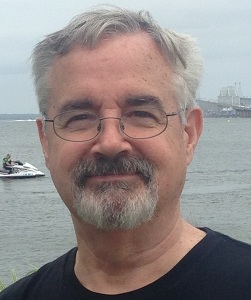Pharmaceutical manufacturers have a duty to deliver consistently safe and effective medicines, and a fundamental part of this is ensuring products do not contain harmful biological contaminants. One approach that is widely used to guarantee drugs are free from bacteria and viruses is terminal sterilization, whereby products are sterilized by heat or gas at the end of their manufacture. However, terminal sterilization is not a suitable approach for many types of therapeutics, including most biologics. The chemicals and high temperatures used to destroy harmful microbes may also kill the micro-organisms essential for synthesizing the biotherapeutic, or render the end-product ineffective.
Instead, these types of drugs must be manufactured in highly controlled aseptic environments that eliminate the potential for exposure to contaminants at every stage of the production process. Aseptic workflows are tightly regulated, with standard operating procedures enforced for a wide range of manufacturing processes, including seemingly innocuous or routine tasks; the way in which operators put on protective gowns, for example, is closely controlled and monitored to prevent the transfer of contaminants from clothes.
Biological safety cabinets (BSCs) are widely used in aseptic manufacturing processes to create a carefully controlled environment that safeguards therapeutic products from airborne impurities, as well as protecting operators from the materials they are working with. Despite this, integrating BSCs into the current good manufacturing practice (cGMP) domain has traditionally been challenging for pharmaceutical companies. In this article, we look at the issues facing manufacturers when using BSCs for aseptic workflows, and how the latest systems are helping laboratories achieve cGMP compliance.
The challenge of meeting cGMP requirements with conventional BSCs
Class II BSCs were initially developed for cell culture applications, with research laboratories being the early adopters of these systems. BSCs use controlled airflows and high-efficiency particulate air (HEPA) filters to provide protection through a precise balance of clean downflow inside the cabinet and inflow drawn from outside the cabinet. However, as the HEPA filters collect more particles, they resist the airflow and the airflow velocities can decline over time.
The traditional way to manage this issue in the research laboratory is to inspect BSCs periodically – usually at regular six or twelve-month intervals. It is then commonplace for service engineers to make small maintenance adjustments or modifications to fan speeds to bring performance back in line with specifications before BSCs are re-certified for use.
While this approach may be acceptable in research facilities, it poses a significant challenge for pharmaceutical manufacturers operating aseptic processes in highly controlled cGMP conditions. In this environment, regulatory authorities expect organizations to demonstrate that their BSCs provide the appropriate level of protection for aseptic processing for the entire duration of drug manufacture.
Although traditional certification approaches can demonstrate that BSCs are working in accordance with specifications following testing and adjustment, it can be unclear how long BSCs have been operating outside of specifications prior to testing. As a result, it is often difficult to determine whether small deviations in airflow have compromised the safety and quality of pharmaceutical products. This can result in the need to destroy perfectly safe and effective product batches at a high cost to the manufacturer – or worse, pharmaceutical companies may be unaware that patient safety has been put at risk.
Simplifying cGMP compliance with modern BSCs
Vendors of Class II BSCs are increasingly aware of the challenges facing pharmaceutical manufacturers and have recently developed new solutions to support cGMP compliant aseptic manufacturing processes. Many of these systems incorporate features to ensure the regulatory compliant control of airflow, with the latest BSCs capable of monitoring and reporting air velocity and allowing for particle counts. Some BSCs will automatically adjust fans to maintain airflow, while other more advanced systems are now able to control inflow and downflow independently, ensuring a consistently balanced flow of HEPA-filtered air for extended periods of time.
The latest BSCs will rapidly alert operators to changes in standard operating conditions using audible alarms and visual notifications, and will even record an exportable log of all airflow measurements and operator activity. Many of the advanced features built into modern BSCs are also designed to ensure these systems maintain certified performance for longer. As a result, if air velocity does decline over time, pharmaceutical manufacturers can quickly access detailed logs to determine when conditions deviated from specific operating parameters and by how much. If these parameters are known to have no effect on the safety or performance of therapeutic products, manufacturers are better placed to demonstrate to regulators that products are still safe to be released to the market.
Other features of modern BSCs are enhancing usability within the cGMP environment. Some of the latest models support data connectivity within the work area, enabling the use of connected instruments and sensors. These set-ups include access for cables and hoses that are protected by negative pressurization, preventing the ingress or egress of unfiltered air. Additionally, the most user-friendly BSCs are built from high-quality materials such as grade 316 stainless steel, which is more resistant to chlorine and easier to clean and maintain.
Additionally, some BSC vendors are committed to meeting the specific needs of individual pharmaceutical manufacturers and will work with customers to improve and tailor documentation to aid regulatory reporting. This flexibility also extends to the physical design of BSCs, with certain vendors providing a high degree of customization, such as reinforcing worksurfaces to handle the additional weight or providing additional data connectivity ports to facilitate the use of specific equipment.
Conclusion
Ongoing advances in the design of Class II BSCs are helping pharmaceutical manufacturers simplify compliance with cGMP requirements when operating aseptic processes. Thanks to the innovative features in the latest BSCs, manufacturers are better placed to deliver safe and effective medicines in accordance with all relevant regulatory obligations.




















